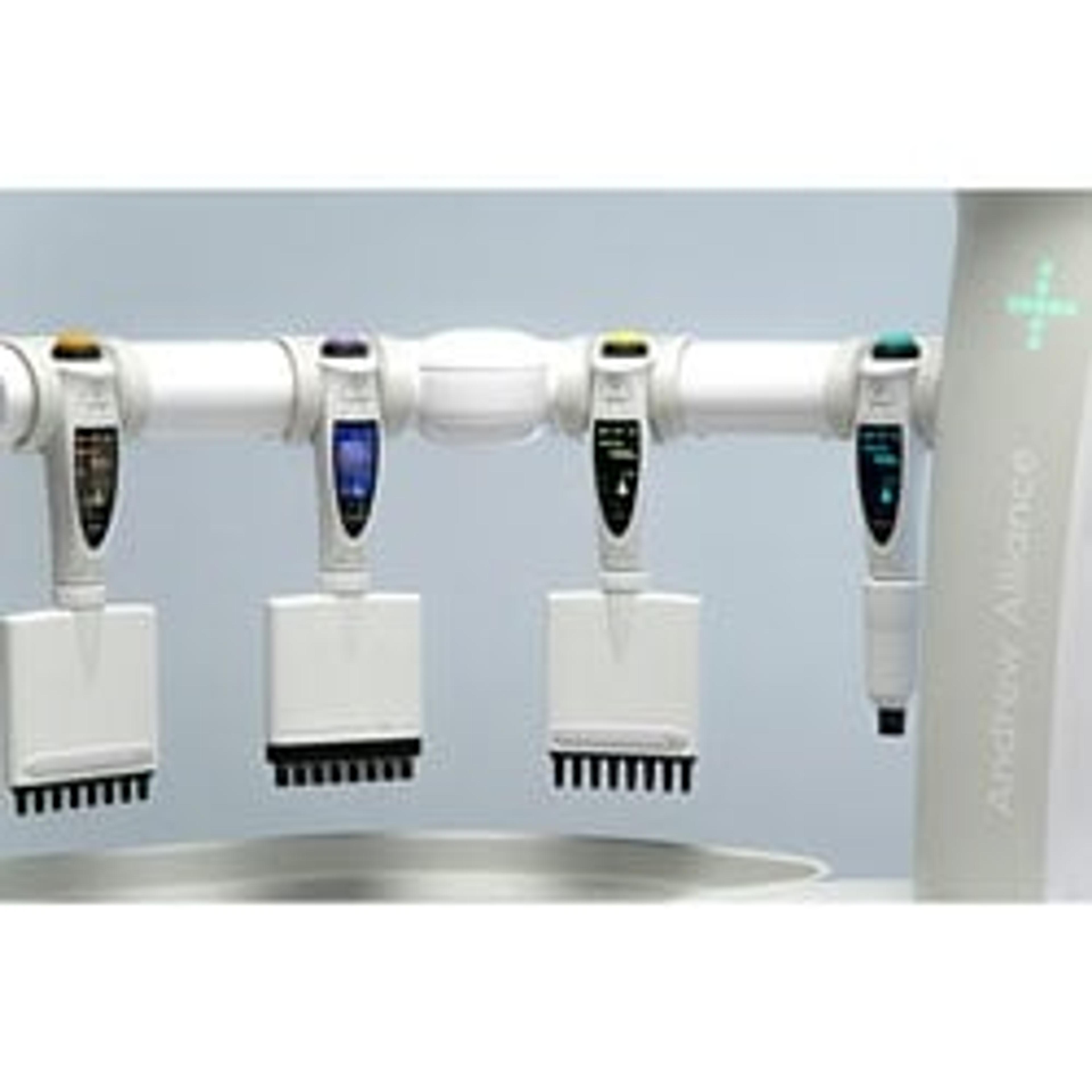Simplify everyday tasks with automation technology
Watch this virtual event on demand to learn about a flexible platform that automates your liquid handling tasks to increase your labs research outputs
8 May 2022

Time is precious. You only have a certain number of hours in a day, so how can you be more efficient? Would you love to be able to press a button and have a robot do all those tedious but critical pipette tasks?
In this one-day virtual event, now available on demand, scientists share their experiences and successes with the Andrew+ pipetting robot. This technology uses conventional laboratory pipettes and tracks all steps within the software. Discover how you can leverage automation and use Andrew+ to gain efficiencies and future-proof your methods, whatever your lab’s needs.
Watch on demandRegister now to watch the event on demand, and read on for highlights from the Q&A discussion led by Matthew Champion, associate professor at the University of Notre Dame, and Michelle Lyons, senior scientist at Fujifilm Diosynth Biotechnologies:
How does this technology compare to other technologies that are currently available?
MC: It's about cost and throughput desires for a particular robot. We really like how the robot behaves like a student in the sense that you're using the same kind of plastic, tubes, tips and pipettors as a student.
We've tried several different automation and semi-automated solutions over the years. The cost of what was required to redevelop workflows on a more traditional deck style robot, relative to the number of samples we analyze in the lab, wasn't cost-competitive.
This particular integration of robotics is fairly cost-competitive, so it's easy to bring into labs of moderate size, academic labs, or in an industrial setting.
How important and beneficial has the automation component of the technology been for your work?
MC: We had a gap in our lab for solid-phase extraction style preparations to feed into instruments, so we sought out an automated solution. The first methods we built out of the robot were micro-scale, desalting, and then the more macro solid-phase extraction that's more familiar to the non-proteomics crowd.
It's now the default way people in my lab prepare samples on the backend for mass spectrometry. It's nice to see that they just walk up to the robot, click a few buttons, and walk away.
How much pipetting can be achieved in one time?
MC: It's a little slower than a person, but it doesn't take breaks so, that's really the benefit of it. The robot supports multi-channel pipettes as well, so you can swap in eight-channel pipettors as opposed to single-channel. For our work, it's pretty serial in nature.
Single-channel pipettes have worked well, although you could scale it to an eight-channel if you were doing reagent reservoirs or constant sample addition across a full plate. That would cut your preparation time by a factor of eight.
The robot can support about 16 to 18 deck elements. So, depending on the exact number of tubes you were dispensing into, you could sustain probably 384 samples for many applications without having to change tips. If you were doing multi-dispense where you used one tip repeatedly, you could do many, many more samples. If you think about a single tip per well kind of work where you're dumping tips, you could do 384 without having any deck swaps.
What maintenance is required for the system and pipettes?
ML: There's very little maintenance required. It's a general clean with some water and a paper towel. We found that the most important maintenance is the pipettes. They have a cage on them which the arm uses to connect to the robot and pick it up. We find that if we ever lose the Bluetooth connection between the pipette and robot, if we cleaned the sensors with a tissue dampened with some ethanol, it made sure that the connection between the pipette arm and the pipette was functioning.
How do you control the Andrew+ robot?
ML: We control it from our laptop via Wi-Fi because we use a version of the software that's all online, called OneLab. Andrew+ itself gets plugged into the network switch that you can see outside of the fume hood. Once that's plugged into your network and you have the online version of the software, then you can do it all remotely. If you are unable to have that open access, you can get a standalone version of Andrew+ where you have your standard setup of a computer next to it, and it's all hardwired in.
Can the Andrew+ record what steps it has performed?
ML: Yes, the Andrew+ records everything that it does. Once your protocol has finished running, there's a part of the software that says exactly what it has done electronically.
You can create a PDF of that protocol and save it to your network drive with your results. What's detailed in the report is when the analysis was started, when it finished, which analyst was controlling the Andrew+ to do that analysis, what protocol was used, and all the devices that it used along with the serial numbers.
It will record the serial numbers of the pipettes as well, and it tells you what reagents were put in what wells, or what vials and the positions of those on the Andrew+. After all that information, it then details exactly what steps it did at what time and how long it took. If there were any errors, they would be detailed in there as well.
To learn more about the Andrew+ pipetting robot, watch the virtual event on demand >>
SelectScience runs 10+ webinars a month, discover more of our upcoming webinars>>

